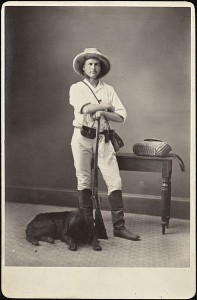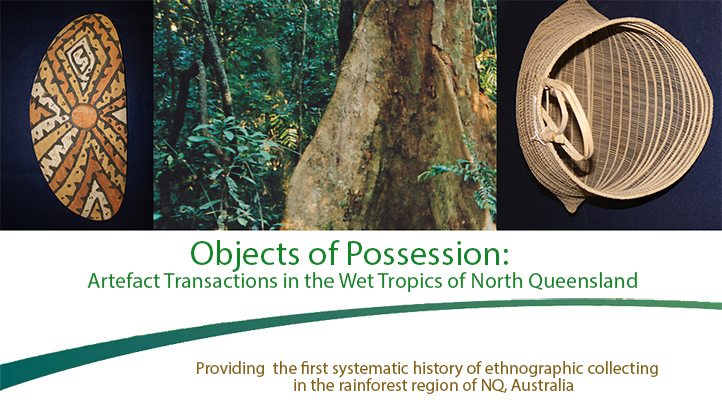
Carl Lumholtz in Queensland, circa 1881. Source: Nasjonalbiblioteket/National Library of Norway, https://commons.wikimedia.org/wiki/File:Portrett_av_Carl_Sofus_Lumholtz,_ca_1881.jpg
Author: Bård R. Aaberge
Collector: Dr Carl Sophus Lumholtz (1851-1922)
Born: 23 April 1851, Lillehammer, Norway
Died: 5 May 1922, Saranac Lake, NY USA
Active: His Australia expedition took place between 1880 and 1884. He was based in Herbert Vale in the North Queensland Wet Tropics from August 1882 to July 1883, where he collected zoological specimens along with Aboriginal artefacts.
Background Biography
Carl Lumholtz was born in 1851 near Lillehammer in Norway. His ancestry stemmed from the clergy, while his father was a Norwegian army officer and his mother coming from a prestigious landowning family. Together they had seven children of whom Carl was the oldest. Via an unwanted theological degree, Lumholtz finally had an opportunity follow his passion for zoology (which he had also studied) when he was offered financial support for an expedition to Australia.
Lumholtz spent four years in Australia (1880-1884) funded by private sponsors and the University of Christiania (now Oslo), initially establishing contacts with museums and scientists in Adelaide, Melbourne and Sydney. He later based himself in Gracemere, a cattle farm in Central Queensland (Nov 1880 – Aug 1881), before his arduous and rather unsuccessful Western Queensland solo expedition in 1881.
He had more success in the Wet Tropics further north, partially as he now employed local Aboriginal guides. His fieldwork expeditions were based out of his lodgings at Herbert Vale by the Herbert River (west of present day Cardwell and Ingham) and ventured into more inaccessible areas, sometimes 100 miles away. During these trips he lived with Aboriginal people and recorded some of their customs such as corroborees, scarification, fire-making, basket weaving and traditional sword duels. As such, Lumholtz was one of the pioneers of ethnographic fieldwork, and prominent, contemporary anthropologists such as Franz Boas, A. C. Haddon and William J. McGee held his later works from Mexico in high regard. As was common among European scholars at the time, Lumholtz understood Australian Aboriginal people as primitive and inferior to the European race following the social-Darwinism of Herbert Spencer.
He described his Australian travels in Among Cannibals, which was published in 1889 and translated into four languages. Unlike his contemporary Norwegian explorers Roald Amundsen and Fridtjof Nansen, Lumholtz is not well known in Norway today. In Australia he is known for discovering the tree kangaroo, and by scholars of Indigenous peoples in the Wet Tropics, albeit they are mostly critical of his evolutionary and primitive views on Aboriginal people. In Mexico, on the other hand, his ethnographic works are celebrated by scholars and Indigenous organisations alike.
References:
Klausen, A. M., Sørum, A., Eek, A. C., & Lumholtz, C. (1993). Under tropenes himmel: Den store norske oppdager Carl Lumholtz. Oslo: Tiden Norsk Forlag.
Lumholtz, C. S. (1889). Among Cannibals: An Account of Four Years’ Travels in Australia and Camp Life with the Aborigines of Queensland. London: John Murray.
